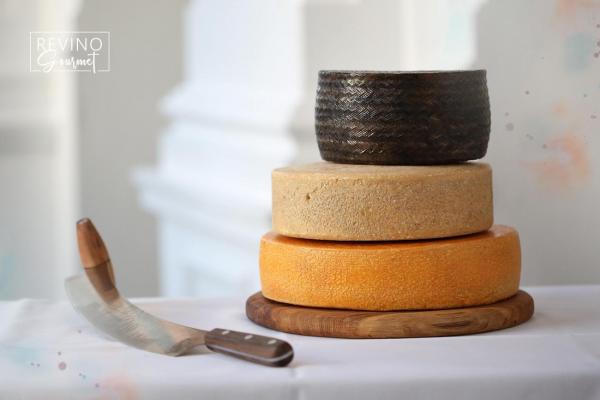|
Horezu City, Valcea County

|
|
 |
Horezu cheese and Valcean soil, where ceramics are made
Sheep's milk has many nutritional benefits, which are also found in cheese. If you need further persuading, start with Horezu cheese, produced in the town of Horezu, Valcea county, which is famous for its ceramics.
Milk has been processed in the factory in Horezu since the communist period, but in 2006 the facility was modernised. The current factory is fully automated for the production of fermented cheese from pressed paste and can process 12,000 litres of milk.

Horezu cheese is a hard cheese, made out of pasteurised sheep's milk from farms on the Sibiu border, in the villages of Vurpar, Dealul Cetatii and Seica, from sheep raised freely in the Hartibaci Plateau in the Transylvanian Basin. It takes between two and 12 months to mature, and the rind detail resembles a grain of wheat.
The product is similar to Manchego cheese, made in the La Mancha region of Spain.
Since 2015, the manufacturer has been a participant in international competitions. It was Highly Commended at the International Cheese Awards in 2015, and won bronze and silver medals at the same event in 2017 and 2018 respectively. In 2018, it also won a bronze medal at the World Cheese Awards in Bergen, Norway.
The cheese is sold in major Romanian stores under the brand name Branza de Horezu (Horezu cheese), and is exported to Spain, Croatia, Germany, France and Latvia under the brand Tierra de Vâlcea (Vâlcean Earth) or Queso Monasterio de Horesu.
Whether served as a snack or grated over salads and hot dishes, it can be paired with sparkling, white or red wine, but also with fortified wines.
Website: www.five-continent-srl.ro
Did you know that the Ceramics of Horezu were given Intangible Cultural Heritage by UNESCO in 2012? UNESCO officials note that “Horezu ceramics are a unique traditional craft [which] reflect generations of knowledge and craftsmanship… Men select and extract the earth, which is then cleaned, cut, watered, kneaded, trampled and mixed – transforming it into a clay body from which the potters of Horezu produce a red pottery… The women decorate the objects using specific techniques and tools to draw traditional motifs. Their skill in combining decoration and colour defines the personality and uniqueness of these ceramics.”
_____
Alina Iancu
14/10/2019

















